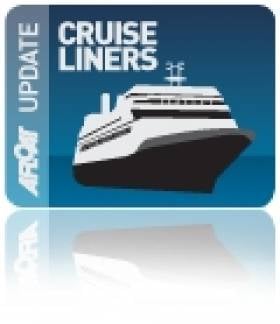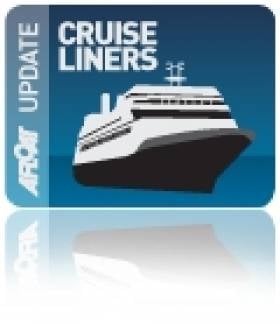Displaying items by tag: P&O Cruises
The near 700-passenger capacity ship operated by UK based Voyages of Discovery is scheduled to call at several Scotish ports before returning to Portsmouth via the North Sea.
Discovery has eight decks with facilities to include two swimming pools, one with a retractable roof, jacuzzis, lounges, bars, a library and gymnasium, lecture theatre, cinema, restaurants, an internet cafe, shop, beauty salon and a medical centre.
She was built in 1971 as the Island Venture, then renamed Island Princess after purchased by Princess Cruises, alongside her sister Pacific Princess which appeared in the popular US TV series sitcom the 'Love Boat' broadcast by ABC between 1977-1986.
In total there will be four cruise-calls during the season to Douglas but the next visit will be not until July when P&O Cruises Adonia calls on the 17th. The ten-year old 710 passenger vessel is due to be named by Dame Shirley Bassey at a ceremony held in Southampton later this month.
Also calling to Douglas will be Oceania Cruises brand new 60,000 tonnes / 1,250 passenger Marina on the 24th July and the final call is to be made by Noble Caledonia's Japanese built Clipper Odyssey in mid-August.
- Killybegs
- Cork
- Discovery
- Marina
- Ringaskiddy
- Cruise Liners
- Princess Cruises
- southampton
- Isle of Man
- P&O Cruises
- Ports and Shipping News
- Manx
- Voyages of Discovery
- Douglas
- Douglas Bay
- Adonia
- Dame Shirley Bassey
- The 'Love Boat'
- ABC
- Pacific Princess
- Island Princess
- Oceania Cruises
- Cruise Liner news
- Clipper Oydessey
- Noble Caledonia
Azura Cruise Liner Docks in Cobh for the First Time
In another first for Cork Harbour the 115,000 ton Azura cruise liner docked in Cobh last Friday.
After her maiden voyage in April, Azura spent summer based in Southampton cruising to the Mediterranean, the Baltic and the Canary Islands. She'll be sailing the Caribbean in winter from Barbados.
She holds 3,100 passengers based on double occupancy (3,574 when all the berths are full).
At 290 metres long and 36 metres wide she looked an impressive sight on the Cobh quayside as our photos show below.
P&O Cruise's Azura is the company's latest cruise liner. Built at the Monfalcone shipyard in Italy, the Azura is one of P&O's largest ships, boasting 14 public decks, 11 restaurants, five boutiques, four pools, two lounges and over 900 private balconies. It also features an outdoor cinema, a first for the company, along with an al fresco spa and single staterooms.

Above and below: two views of the new Azura berthed in Cobh last Friday. Photo: Bob Bateman

The Big One: Azura Cruises into Dublin
As the cruise season draws to a close, the Azura, the largest cruise-ship (116,000 gross registered tonnes) to call at Dublin, docked this morning at the port for the third time this year, writes Jehan Ashmore.
A unique feature is the huge 20-metre plasma screen video wall mounted on an after bulkhead. In addition the venue is used to broadcast major sporting events. The Sea Screen outdoor cinema is the first of its kind in the P&O Cruises fleet as is the novelty of passengers having an option of
single stateroom accommodation.
Azura is one of 12 vessels eminating from the 'Grand' class vessels built for Miami based Carnival Cruise Corporation which includes P&O Cruises and Princess Cruises. The leadship, Grand Princess became the first of the class to call at Dublin in 2004 and also had the distinction as the first cruiseship to surpass the 100,000gt mark to dock at the port. Last month, another near-sister, Emerald Princess, measuring 113,000grt called to Dublin.
In total there will be 86 cruise ships visiting Dublin this year, marking another record-breaking season. The sector is expected to generate €35-€55m to the local economy from approximately 80,000 high-spending passengers.
The Azura departs Dublin tonight at 21.15hrs for Cork, where the giant vessel is to berth at the Cobh Cruise Terminal. There will be off-season cruise-calls to the capital next month by Ocean Countess and Norwegian Sun, arriving from Belfast on 2 October. The last cruise-caller to Dublin this year will
be Fred Olsen Cruises Boudicca with two visits in November.
































































